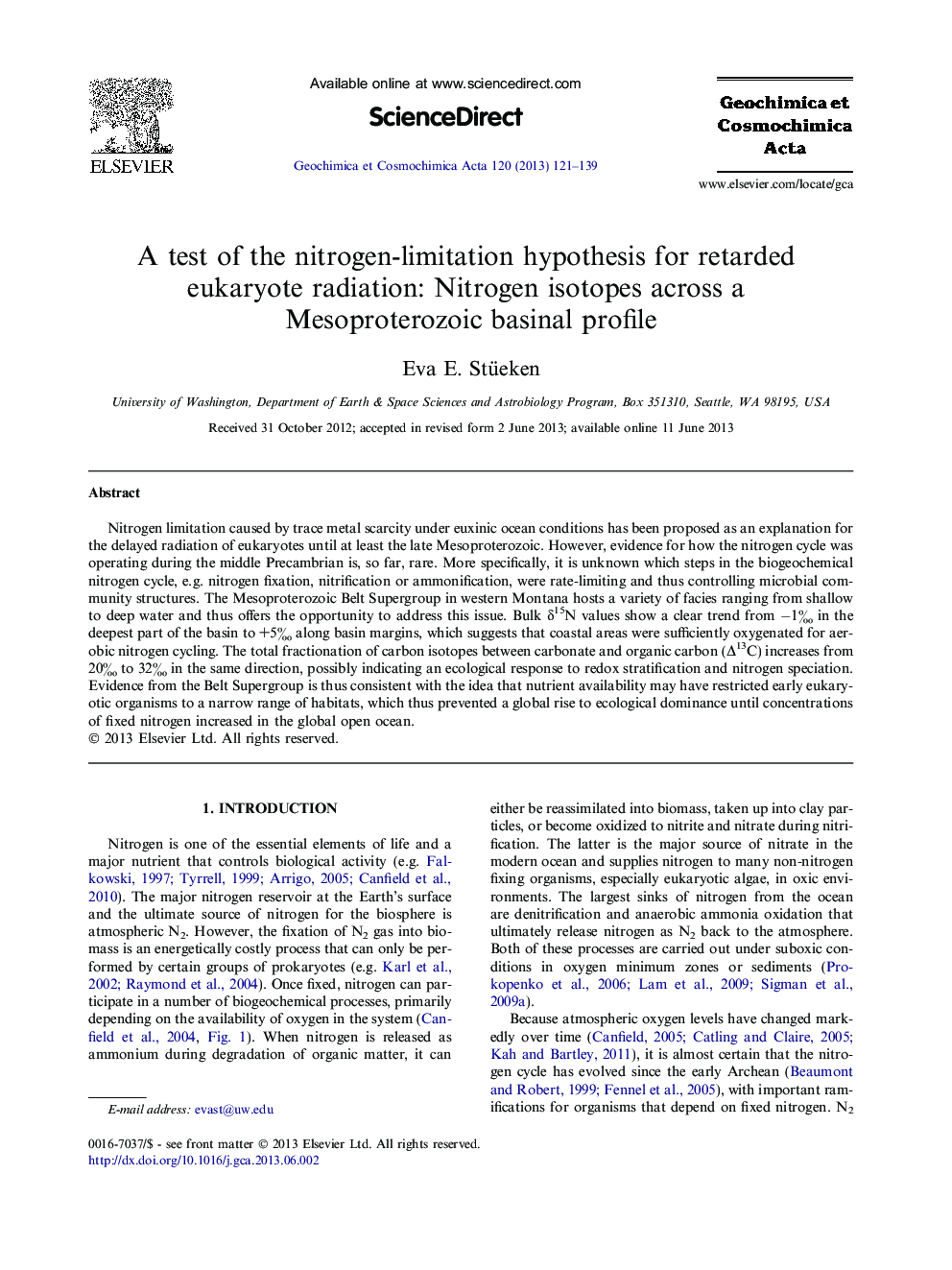| Article ID | Journal | Published Year | Pages | File Type |
|---|---|---|---|---|
| 6438974 | Geochimica et Cosmochimica Acta | 2013 | 19 Pages |
Abstract
Nitrogen limitation caused by trace metal scarcity under euxinic ocean conditions has been proposed as an explanation for the delayed radiation of eukaryotes until at least the late Mesoproterozoic. However, evidence for how the nitrogen cycle was operating during the middle Precambrian is, so far, rare. More specifically, it is unknown which steps in the biogeochemical nitrogen cycle, e.g. nitrogen fixation, nitrification or ammonification, were rate-limiting and thus controlling microbial community structures. The Mesoproterozoic Belt Supergroup in western Montana hosts a variety of facies ranging from shallow to deep water and thus offers the opportunity to address this issue. Bulk δ15N values show a clear trend from â1â° in the deepest part of the basin to +5â° along basin margins, which suggests that coastal areas were sufficiently oxygenated for aerobic nitrogen cycling. The total fractionation of carbon isotopes between carbonate and organic carbon (Î13C) increases from 20â° to 32â° in the same direction, possibly indicating an ecological response to redox stratification and nitrogen speciation. Evidence from the Belt Supergroup is thus consistent with the idea that nutrient availability may have restricted early eukaryotic organisms to a narrow range of habitats, which thus prevented a global rise to ecological dominance until concentrations of fixed nitrogen increased in the global open ocean.
Related Topics
Physical Sciences and Engineering
Earth and Planetary Sciences
Geochemistry and Petrology
Authors
Eva E. Stüeken,
